About
Card Matching Game
Introduction
As part of the LSS Syllabus, Secondary 1 students are expected to learn the following about the Globally Harmonised System (GHS). This application aims to make learning about lab safety more enjoyable and interesting for students.What this game is
This is a simple memory-match game.- 18 cards (9 symbol cards, 9 explanation cards) are faced down randomly on the play-space
- Students click on two cards and if they match, they get a point.
- If they don’t match, the student has to try again to pick a correct pair
- They continue doing this until all 9 pairs are successfully match
Translations
| Code | Language | Translator | Run | |
|---|---|---|---|---|
 |
||||
Credits
Shaun Quek; lookang; based on idea by Kishan
1. Main Themes and Purpose
The central theme across both resources is the use of a simple memory-matching game as an engaging and interactive tool. The specific GHS symbol game explicitly targets educational objectives within the lower secondary science curriculum in Singapore, aiming to make learning about lab safety and the GHS more enjoyable.
The stated purpose of the GHS symbol matching game is clearly defined in the "About" section:
"As part of the LSS Syllabus, Secondary 1 students are expected to learn the following about the Globally Harmonised System (GHS). This application aims to make learning about lab safety more enjoyable and interesting for students."
This highlights the game's direct connection to curriculum requirements and its pedagogical goal of enhancing student engagement with potentially dry but crucial safety information.
2. Key Features and Mechanics
Both resources describe a basic memory-matching game with the following core mechanics:
- Card Layout: The GHS symbol game features "18 cards (9 symbol cards, 9 explanation cards)" arranged face down on a play-space. The "Matching Game of 9 by 9 cards" implies a larger grid of cards (81 total), though the excerpt focuses on the underlying concept.
- Gameplay Loop: Students interact by clicking on two cards at a time.
- Matching Rule: If the two selected cards form a correct pair (a GHS symbol and its corresponding explanation in the specific game), the student earns a point.
- Feedback Mechanism:Match: Successful matches are likely indicated by the cards remaining face-up or being removed from the play area.
- No Match: If the cards do not match, "the student has to try again to pick a correct pair" and in the GHS version, "the cards flip back down to the same position." This reinforces memory and trial-and-error learning.
- Winning Condition: The game continues "until all 9 pairs are successfully matched" in the GHS version. The winning condition for the generic 9x9 game is not detailed in the provided excerpt.
3. Educational Value and Target Audience
The "Matching Game using GHS Symbols" is explicitly designed for Lower Secondary (Secondary 1) students in Singapore, aligning with their science syllabus requirements related to the Globally Harmonised System.
The educational value lies in:
- Active Learning: The interactive nature of the game requires students to actively engage with the GHS symbols and their meanings, rather than passively reading information.
- Reinforcement and Memorization: The memory-matching mechanic helps reinforce the association between the symbols and their explanations through repeated attempts and recall.
- Gamification: By presenting learning in a game format, the application aims to increase student motivation and make the learning process more enjoyable ("more enjoyable and interesting for students").
The inclusion of "Sample Learning Goals" further emphasizes the game's educational intent, reiterating its alignment with the LSS Syllabus and the core game mechanics.
4. Additional Features and Modes (GHS Symbol Game)
The "For Teachers" section of the GHS symbol game description outlines additional features and modes that enhance its pedagogical utility:
- Training Mode: This mode is designed "for beginning to learn" and includes a timer after clicking start. Upon completion, the training is finished, and a "reset" option is available. This suggests a more guided introduction to the symbols and their meanings.
- Memory Game Mode (Advanced Challenge): In this mode, "all cards are now turn black" after clicking start, and a timer begins. The game is completed when all cards are matched, with the timer recording the time taken. This mode focuses on enhancing memory skills and provides a competitive element ("record down your time and challenge your friends").
These different modes cater to varying learning stages and preferences, allowing educators to use the application in different ways to support student learning.
5. Technical Aspects and Accessibility
The GHS symbol matching game is a "JavaScript HTML5 Applet," indicating that it is web-based and designed to run within modern web browsers without the need for additional plugins. The "Embed" section provides an iframe code snippet, demonstrating its ease of integration into webpages or learning management systems:
<iframe width="100%" height="100%" src="https://iwant2study.org/lookangejss/cardgame/ejss_model_cardMatching01/cardMatching01_Simulation.xhtml " frameborder="0"></iframe>
This embeddability enhances its accessibility for educators and students. The mention of "Open Educational Resources / Open Source Physics @ Singapore" in the title and credits suggests that the resource is freely available for educational use, aligning with the principles of open education. The license information in the "Matching Game of 9 by 9 cards" excerpt ("Released under a license") further supports this.
6. Credits and Development Context
Both resources credit Shaun Quek; lookang; based on idea by Kishan. This consistent attribution suggests a collaborative development effort. The inclusion under "Open Educational Resources / Open Source Physics @ Singapore" indicates a connection to a broader initiative focused on providing openly accessible educational materials in physics and related sciences. The mention of "Compiled with EJS 6.1 BETA (201115)" in the generic game suggests the use of the Easy JavaScript Simulations (EJS) toolkit for its development.
The extensive list of "Other Resources" linked at the end of the GHS symbol game page provides context for the platform and the range of educational simulations and games available through this initiative. This list showcases a diverse collection of interactive learning tools spanning various subjects and levels.
7. Potential Applications and Considerations
The "Matching Game using GHS Symbols" offers a practical tool for:
- Introducing GHS symbols: The training mode can be used to familiarize students with the symbols and their meanings.
- Reinforcing learning: The memory game mode can serve as a fun and engaging way to review and consolidate knowledge of GHS symbols.
- Differentiated learning: The availability of different modes allows educators to cater to students with varying levels of familiarity and memory skills.
- Assessment (informal): The game can provide teachers with an informal way to gauge student understanding of GHS symbols.
Considerations for educators include:
- Alignment with specific curriculum: While the game aligns with the LSS Syllabus in Singapore, educators in other regions may need to ensure its relevance to their specific curriculum requirements.
- Accessibility for all learners: Ensuring that all students can effectively interact with the game, considering factors like digital literacy and potential learning disabilities.
- Integration into broader learning activities: The game is likely most effective when integrated as part of a larger lesson or unit on lab safety and GHS.
8. Conclusion
The "Matching Game using GHS Symbols for Lower Secondary 2021 JavaScript HTML5 Applet" is a well-defined and accessible educational resource that leverages the engaging mechanics of a memory-matching game to help lower secondary students learn about important lab safety information related to GHS symbols. Its clear objectives, multiple game modes, and ease of embedding make it a valuable tool for educators looking to enhance student engagement and understanding of this crucial topic. The broader context of Open Educational Resources / Open Source Physics @ Singapore suggests a commitment to providing high-quality, freely available educational materials.
Study Guide: GHS Symbol Matching Game
Overview
This study guide is designed to help you review the "Matching Game using GHS Symbols for Lower Secondary 2021 JavaScript HTML5 Applet." The game is an educational tool intended for Secondary 1 students to learn about the Globally Harmonised System (GHS) of classification and labelling of chemicals through a memory-matching activity. It features 18 cards, consisting of 9 GHS hazard symbols and 9 corresponding explanation cards. The objective is to match all nine pairs by clicking on two cards at a time. Correct matches earn points, while incorrect matches result in the cards being flipped back down. The game has different modes, including a training mode and a memory game mode for an added challenge.
Key Concepts
- Globally Harmonised System (GHS): An internationally agreed-upon system for classifying and labelling hazardous chemicals. It aims to standardize hazard communication across different countries.
- Hazard Symbols (Pictograms): Standardized visual representations that communicate the specific hazards associated with a chemical.
- Explanation Cards: Textual descriptions that clarify the meaning of each GHS hazard symbol.
- Memory Matching: A cognitive game that tests and improves short-term memory and recognition skills.
- Educational Applet: A small, interactive application designed for learning purposes, in this case, using JavaScript and HTML5.
- Open Educational Resources (OER): Educational materials and resources available freely for use, adaptation, and sharing.
- Open Source Physics (OSP): A project focused on developing and sharing computational tools and resources for physics education.
Review Questions
- What is the primary purpose of the "Matching Game using GHS Symbols"?
- Who is the intended audience for this educational game?
- Briefly describe how the matching game is played.
- How many cards are used in the game, and what are the two types of cards?
- What happens when a player clicks on two cards that do not match?
- According to the description, what is one of the learning goals associated with this game within the LSS Syllabus?
- What are the differences mentioned between the "training mode" and the "memory game mode"?
- Who are credited with the creation and underlying idea of this matching game?
- Under what type of license is this educational resource released?
- Where can this matching game be embedded and run?
Quiz
Answer the following questions in 2-3 sentences each.
- What is the Globally Harmonised System (GHS), and why is it important in the context of lab safety?
- Describe the visual components of the matching game and their respective roles in the learning process.
- Explain the basic rules of the "Card Matching Game" as described in the introductory section.
- What is the significance of this game being identified as an "Open Educational Resource"?
- How does the game aim to make learning about lab safety more "enjoyable and interesting" for students?
- What is the purpose of having both "symbol cards" and "explanation cards" in the game?
- In the "memory game mode," what additional challenge is introduced compared to the training mode?
- Based on the provided text, what subject area within the lower secondary syllabus is this game specifically designed to support?
- Where might teachers find information on how to use this game effectively in their lessons?
- What does the mention of "JavaScript HTML5 Applet" indicate about the technology used to create this game?
Quiz Answer Key
- The Globally Harmonised System (GHS) is an internationally standardized system for classifying and labelling chemicals. It is crucial for lab safety as it ensures consistent communication of chemical hazards, promoting safer handling and storage practices.
- The game features 18 face-down cards, consisting of 9 symbol cards displaying GHS hazard pictograms and 9 explanation cards providing text descriptions of these symbols. The goal is to visually recognize and cognitively connect the symbol with its corresponding meaning.
- Players start with all 18 cards face down and take turns clicking on two cards. If the selected cards form a matching GHS symbol and its explanation, the player gets a point, and the pair remains face up. If they don't match, both cards are flipped back down.
- Being an "Open Educational Resource" means that the game is freely available for educators and students to use, share, and potentially adapt for their own learning and teaching purposes without cost or restrictive copyright limitations.
- The game aims to make learning about lab safety more engaging by using a familiar and interactive memory-matching format. This gamified approach can increase student motivation and make the process of learning hazard symbols less rote and more enjoyable.
- The symbol cards provide a visual cue to the type of hazard, while the explanation cards offer a clear textual definition. This dual representation caters to different learning styles and reinforces understanding by linking the visual and textual information.
- In the "memory game mode," all cards are initially turned black, adding a layer of difficulty by requiring players to rely solely on their memory of card positions after brief glimpses, thus enhancing the memory challenge.
- The text explicitly states that this application is designed as part of the Lower Secondary Syllabus (LSS) and is specifically relevant to what Secondary 1 students are expected to learn about the Globally Harmonised System (GHS) in Chemistry.
- The "For Teachers" section provides information relevant to educators, mentioning a "ScreenShot of Game Play" and describing different game modes that teachers might utilize in their lessons.
- The term "JavaScript HTML5 Applet" indicates that the game is built using web technologies, making it accessible through web browsers without the need for special software installation. This allows for easy embedding and use on various devices.
Essay Format Questions
- Discuss the pedagogical benefits of using memory-matching games, like the one described, for teaching scientific concepts such as GHS hazard symbols to lower secondary students. Consider aspects like engagement, retention, and different learning styles.
- Evaluate the strengths and limitations of using a digital, interactive tool like this GHS matching game compared to more traditional methods of teaching lab safety, such as lectures or textbook readings.
- Analyze how the inclusion of different game modes (training vs. memory) caters to varying levels of student understanding and learning preferences. How might teachers effectively integrate these modes into their teaching strategies?
- Considering the open educational resource and open source nature of this application, discuss the potential impact and benefits of such resources in science education, particularly in terms of accessibility and adaptability.
- Based on the provided information, propose potential enhancements or additions to the "Matching Game using GHS Symbols" that could further improve its educational value and engagement for Secondary 1 students learning about lab safety.
Glossary of Key Terms
- Applet: A small application, often written in Java or JavaScript, designed to run within another application, typically a web browser.
- Embed: To integrate content, such as a video or an application, into a webpage or another digital document.
- Globally Harmonised System (GHS): An international system created by the United Nations to standardize the classification and labelling of chemicals.
- Hazard Symbol (Pictogram): A graphic image used to communicate specific hazards associated with a chemical product.
- HTML5: The latest evolution of the standard markup language for creating web pages and web applications, supporting multimedia without plugins.
- JavaScript: A high-level, often just-in-time compiled language that conforms to the ECMAScript specification. It is a programming language that makes web pages interactive.
- Lower Secondary Syllabus (LSS): The curriculum framework for students in the lower secondary level of education.
- Open Educational Resources (OER): Teaching, learning, and research materials that are in the public domain or have been released under an open license, permitting no-cost access, use, adaptation, and redistribution by others with no or limited restrictions.
- Open Source Physics (OSP): A collaborative project that develops and promotes the use of open-source computational tools and resources for physics education.
- Pedagogical: Relating to teaching or education.
- Secondary 1: Typically the first year of secondary education in some educational systems.
Sample Learning Goals
As part of the LSS Syllabus, Secondary 1 students are expected to learn the following about the Globally Harmonised System (GHS). This application aims to make learning about lab safety more enjoyable and interesting for students.
This is a simple memory-match game:
- 18 cards (9 symbol cards, 9 explanation cards) are faced down randomly on the play-space
- Students click on two cards and if they match, they get a point.
- If they don’t match, the cards flip back down to the same position
- They continue doing this until all 9 pairs are successfully matched
For Teachers
ScreenShot of Game Play
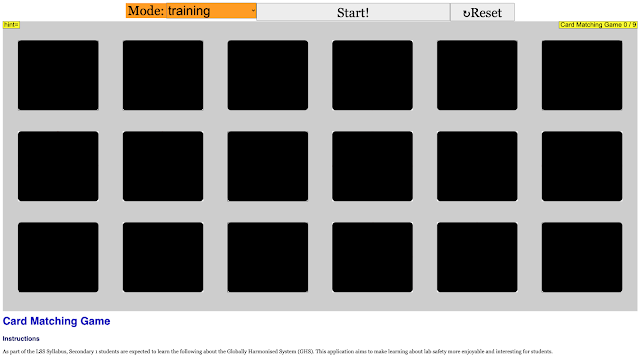 |
| begin training mode for beginning to learn |
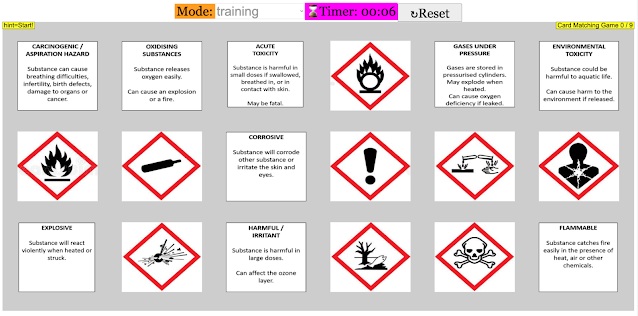 |
| after clicking start, training mode game begins with timer |
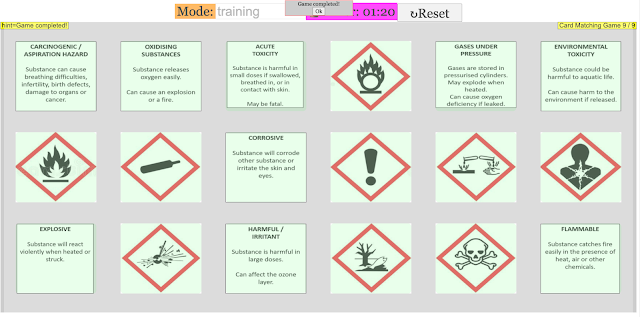 |
| after completion, matching training is finished, click reset to try another mode |
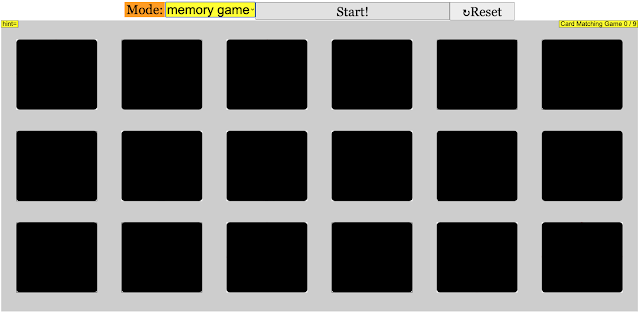 |
| For advance challenge, select memory game mode, all cards are now turn black |
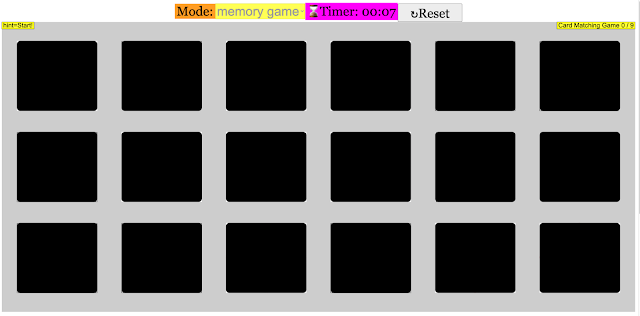 |
| after clicking start, timer begins |
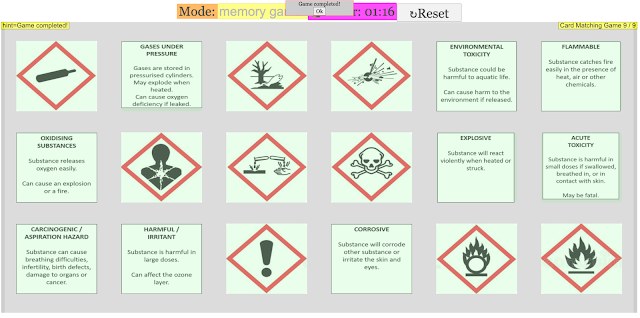 |
| after all cards are matched, game is completed with timer, record down your time and challenge your friends |
Research
[text]
Video
[text]
Version:
- http://weelookang.blogspot.sg/2016/02/vector-addition-b-c-model-with.html improved version with joseph chua's inputs
- http://weelookang.blogspot.sg/2014/10/vector-addition-model.html original simulation by lookang
Other Resources
[text]
Frequently Asked Questions: Matching Game of 9 by 9 Cards
1. What is the "Matching Game of 9 by 9 cards" described in these sources?
The "Matching Game of 9 by 9 cards" is a simple memory-based game designed as a JavaScript HTML5 applet. It typically features 18 cards laid face down, consisting of 9 matching pairs. In the specific context of the provided sources, the game uses Globally Harmonised System (GHS) symbols and their corresponding explanations, aimed at helping lower secondary students learn about lab safety.
2. What is the educational purpose of this matching game?
The primary educational purpose of this game is to make learning about the Globally Harmonised System (GHS) for lab safety more engaging and enjoyable for Secondary 1 students. By using a game format, it aims to help students memorize and understand the meanings of different GHS symbols and their associated hazards in a more interactive way than traditional learning methods.
3. How is the game played?
The game starts with 18 cards (9 symbol cards and 9 explanation cards) displayed face down in a random arrangement on the play area. Players click on two cards to reveal them. If the two revealed cards form a matching pair (a GHS symbol and its correct explanation), the player earns a point, and the matched cards are typically removed or remain face up. If the cards do not match, they are flipped back down to their original positions. The player continues this process until all 9 pairs have been successfully matched.
4. What are the different game modes available?
The sources mention at least two distinct game modes: "training mode" and "memory game mode." Training mode is designed for beginners and includes a timer. After starting in training mode, the game begins, and the timer starts. Upon completing all matches, the training session is finished, and players can reset to try another mode. The memory game mode is presented as an "advance challenge" where all cards are initially turned black (or presumably remain face down without a preview). Similar to the training mode, a timer begins after clicking start, and the game is completed when all cards are matched, allowing players to record their time and challenge others.
5. Who developed this game and under what license is it released?
The game is credited to Shaun Quek and lookang, based on an idea by Kishan. The software was compiled with EJS 6.1 BETA (201115). It is released under a license, although the specific details of the license are not fully elaborated in the excerpts, other than mentioning a Creative Commons Attribution-Share Alike 4.0 Singapore License for the contents and a separate commercial use license for the EasyJavaScriptSimulations Library (with contact information provided).
6. For which educational level is this game intended?
This specific implementation of the matching game, using GHS symbols, is explicitly intended for Lower Secondary (Secondary 1) students as part of their LSS Syllabus to learn about lab safety within the Globally Harmonised System.
7. Can this game be embedded into other web pages?
Yes, the sources explicitly provide an "Embed" option with an <iframe> code snippet. This allows educators or website administrators to easily integrate the interactive matching game directly into their own web pages or learning platforms.
8. Where can I find and run this game?
The embed code in the source provides a direct link to run the game: https://iwant2study.org/lookangejss/cardgame/ejss_model_cardMatching01/cardMatching01_Simulation.xhtml. This URL should allow users to access and play the matching game in a web browser that supports HTML5.
- Details
- Written by Shaun
- Parent Category: Chemistry
- Category: 01 Experimental Chemistry
- Hits: 5232


.png
)





